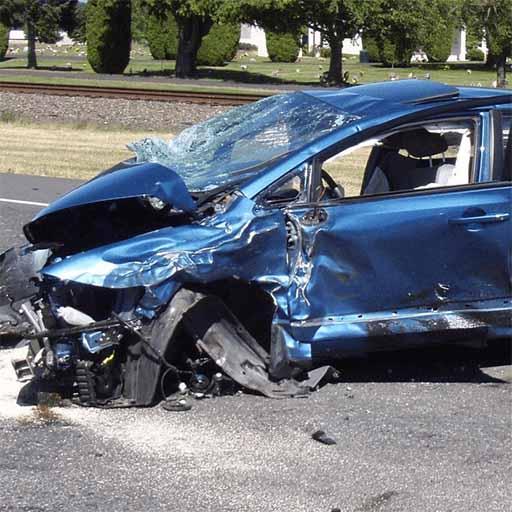About My Instant Case Analysis Tool
Introduction
This article explains the process underlying the Instant Case Analysis tool featured on my site.
The tool interviews potential clients, gathering the details of their situation. Conditional logic is used during the interview, so it is not the same for every client. (Example: if a client indicates that they were a pedestrian, the interview proceeds in a different direction than if they indicate that they were a vehicle passenger or operator.)
Most of the client's answers will factor into the analysis of their case, though some questions are solely for the benefit of the attorney. For example, the number of occupants in the client's vehicle has no direct impact on the analysis of their individual case strength, but as an attorney I wish to know the potential of securing additional clients from this case.
The interview is immediately discontinued if the client indicates that:
- the accident occurred outside of Florida, or
- they sustained no injury or discomfort as a result of the accident, or
- the accident occurred over 4 years ago and they have yet to file suit
In any of these circumstances, a brief message explains why the interview is being discontinued.
Overall Score & Analysis
At the conclusion of the interview, the client's answers are analyzed. Their case is assigned a score and a brief overall analysis. Here's an example of an overall analysis for a case I've scored at 65 out of 100:
You have all the makings of a mid-quality underinsured personal injury case. Although you have serious damages that often result in mid to high figure personal injury verdicts and settlements, you may be partially to blame for the accident, which lowers the value of your case. In addition, there is only about a 50% chance that the opposing party has any liability coverage to pay for those damages. Even if they carry liability coverage, it is often in lower limits, and thereby likely leaving you undercompensated.
The overall analysis is derived from a lower-level analysis of multiple case factors:
- Prior Attorney Withdrawal (if applicable)
- Severity Of Injuries
- Time Elapsed Prior To Medical Treatment
- Types Of Treatment Sought
- Liability
- Impact Severity
- Punitive Factors
- At-Fault Or Opposing Party's Insurance Coverage
Individual Case Factors
- Prior Attorney Withdrawal. If the client indicates that they previously had counsel who withdrew due to an opinion that the client was at fault, this is strongly considered in my analysis of their overall liability. If prior counsel withdrew due to the at-fault or opposing party being underinsured, I consider this with regard to recoverability.
- Severity of Injuries. A distinction is made between minor injuries (such as whiplash), serious injuries (such as lacerations) and catastrophic injuries (such as paralysis). The client can select common injuries from a list, or search through additional injury types.
All Injury Types
Following are several examples of alternative terms that will bring up specific injuries.
- Cervical Dislocation (or 'dislocated neck', 'neck dislocation')
- Fractured Bone (or 'broken bones', 'fractured bones', 'bone fragments')
- Disc Injury (or 'herniated disc', 'ruptured disc', 'displaced disc', 'torn disc', 'slipped disc', 'collapsed disc', 'bulging disc', 'disc protrusion', 'black disc', 'disc disease')
- Nerve Injury (or 'sciatica', 'compressed nerve', 'pinched nerve')
- Bruised Ligaments (or 'bruised spinal cord')
- Nerve Damage (or 'destroyed axons', 'brachial plexus damage')
- Neck Strain (or 'neck sprain', 'stiffness in neck', 'neck spasms')
- Back Strain (or 'lumbar strain')
- Mid-Back Injury (or 'mid-back soreness', 'middle back injury', 'thoracic radiculopathy')
- Neck Pain (or 'soreness in neck', 'cervical radiculopathy')
- Lower Back Pain (or 'lumbar radiculopathy', 'sore back', 'lumbar pain', etc.)
- Spinal Damage ('fractured spine', 'damaged vertebrae', 'spine injuries', etc.)
- Nose Bleed (or 'bloody nose')
- Broken Nose
- Jaw Disorder (or 'TMJ')
- Dental Injuries (or 'cracked teeth', 'chipped teeth', 'damaged teeth', 'broken veneers', etc.)
- Contusions (or 'black eye', 'facial bruises')
- Abrasions (or 'gashes', 'scrapes', 'cuts', 'graze')
- Bowel Injuries (or 'bladder injury', 'loss of bowel control', etc.
- Kidney Injuries (or 'ruptured kidney', 'bruised kidneys', etc.)
- Spleen Injuries
- Liver Injuries
- Lung Injuries
- Heart Injuries
- Aorta Injuries
- Dislocated Ribs
- Fractured Ribs
- Organ Puncture
- Internal Bleeding
- Hernia
- Emotional Distress
- Post-Traumatic Stress Disorder
- Sleep Disorders
- Concussion
- Other Hematomas
- Epidural Hematomas
- Subdural Hematomas
- Brain Injury
- Dizziness
- Visual Disturbance
- Tinnitus
- Brain Hemorrhage
- Torn Ligaments
- Cervical Fractures
- Dislocation
- Torn Cartilage
- Dislocated Kneecap
- Rotator Cuff Injuries
- Arm Numbing
- Hand Numbing
- Leg Numbing
- Foot Numbing
- Shoulder Pain
- Coma
- Stroke
- Loss of Senses
- Paralysis
- Loss of Body Parts
- Severed Arm
- Severed Hand
- Severed Finger
- Severed Leg
- Severed Foot
- Severed Toe
- Severed Nose
- Severed Ear
- Severed Penis
- Severed Breast
- General Body Pain
- First-Degree Skin Burn
- Second-Degree Skin Burn
- Third-Degree Skin Burn
- Fainting
- Heart Attack
- Time Elapsed Prior To Medical Treatment. I determine if a treatment gap in exists, which could reduce damages under Florida's PIP law. This is done by comparing the time it took the client to initiate treatment (if they have) to the time elapsed since the accident occurred.
- Types Of Treatment Sought. If the client has already initiated treatment, evaluate the impact that treatment with that type of provider will have on the case. For example, if the client treated exclusively with an alternative medicine provider, such as an acupuncturist, they fall into a different class than clients who also received treatment at an emergency room and a chiropractor. Treatment providers are a broken into four tiers, with each tier representing a different level of value it would add to the case.
- Liability. In determining the client's liability, I consider their role (vehicle operator, passenger, pedestrian, or "other"), the presence or absence of a ticket, and their self-reported level of fault.
- Impact Severity. I consider both the type of impact and the client's self-described impact severity (mild, moderate, or severe).
- Punitive Factors. If the client indicates that the at-fault or opposing party was driving under the influence or drugs or alcohol, texting while driving, or in the commission of a crime, punitive damages are assumed.
- At-Fault Or Opposing Party's Insurance Coverage. To determine insurance coverage, I consider whether or not the at-fault or opposing party was operating a rental vehicle, the client's UM coverage, the type of insurance held by the at-fault or opposing party (commercial or personal), and the at-fault or opposing party's insurance carrier. Like medical providers, insurance carriers are divided into multiple tiers. These tiers range from carriers who (in my experience) invariably offer larger settlements and carry high liability limits, to carriers who rarely if ever pay and carry only low liability limits, if any at all. As clients are often unsure of the answers to each of these questions, my analysis of this factor is often tentative.
End Result
The client is presented with my overall analysis, followed by my analysis of each applicable case factor. They can then complete a form, which will email me their contact information, any comments, their case score, a shorthand version of the overall and individual factor analysis, and their interview answers.
The client also receives an email, which contains the full case analysis text, their interview answers, and my contact information.
Final Thoughts
While no system can be as comprehensive as a live attorney, this tool offers significant advantages over traditional methods of client intake and lead generation. It is able to analyze hundreds of scenarios, at a level of speed, complexity, and reliability than can't be achieved by legal office staff, "live chat" operators, or LRS call center operators.
The tool is currently in beta testing, and may contain errors or omissions. It is also evolving, and as development continues, will become even more sophisticated and fine-tuned.








